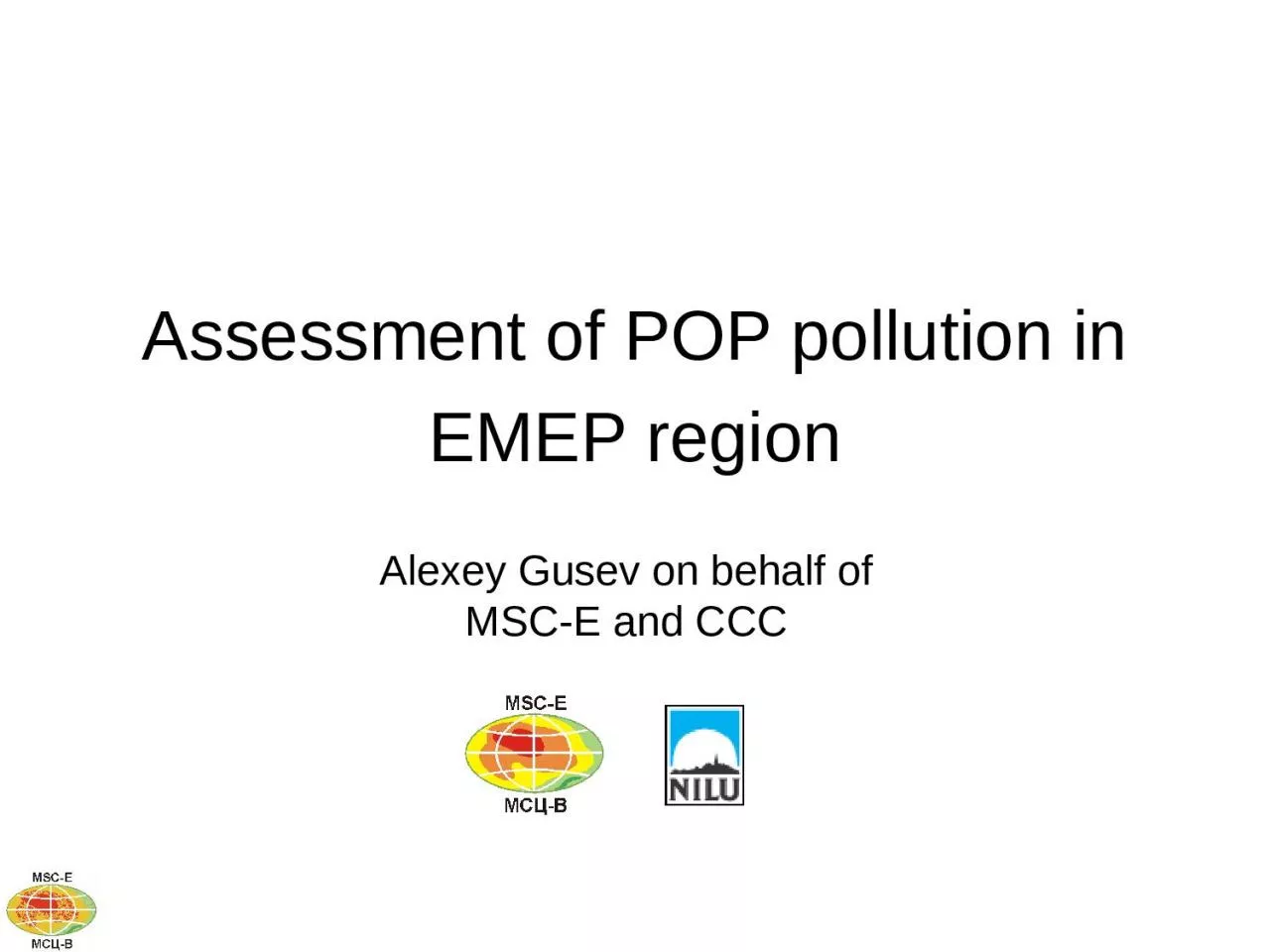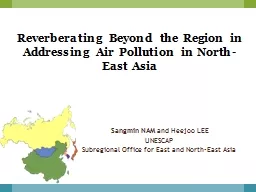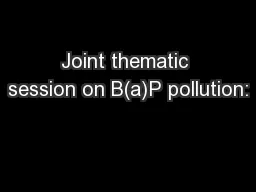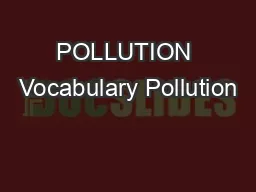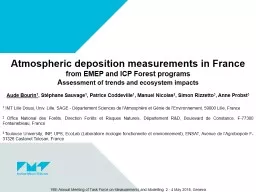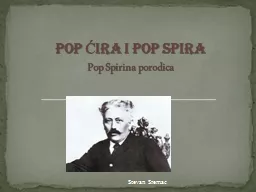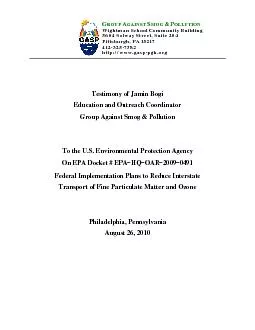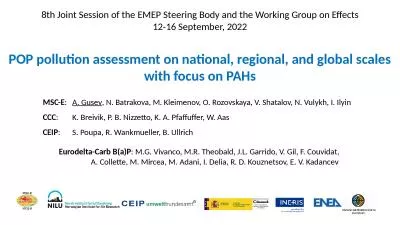PPT-Assessment of POP pollution in EMEP region
Author : ivy | Published Date : 2024-01-03
Alexey Gusev on behalf of MSCE and CCC Item Activity description 1114 Evaluation of HM and POP background levels in selected cities of the EMEP domain 1116 Ecosystemdependant
Presentation Embed Code
Download Presentation
Download Presentation The PPT/PDF document "Assessment of POP pollution in EMEP regi..." is the property of its rightful owner. Permission is granted to download and print the materials on this website for personal, non-commercial use only, and to display it on your personal computer provided you do not modify the materials and that you retain all copyright notices contained in the materials. By downloading content from our website, you accept the terms of this agreement.
Assessment of POP pollution in EMEP region: Transcript
Download Rules Of Document
"Assessment of POP pollution in EMEP region"The content belongs to its owner. You may download and print it for personal use, without modification, and keep all copyright notices. By downloading, you agree to these terms.
Related Documents

